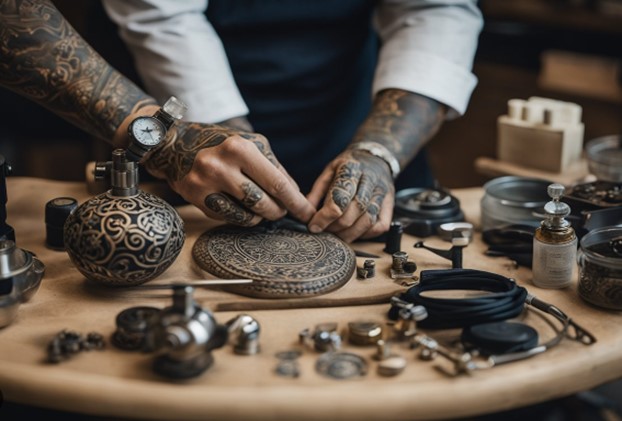Tattoo art has a rich and storied history that spans centuries and cultures, evolving from ancient traditions to modern styles that continue to captivate and inspire. In this article, we’ll take a journey through the fascinating evolution of tattoo art, exploring its origins, cultural significance, and the diverse styles that have emerged over time.
Ancient Origins: Rituals and Symbolism
Tattooing has been practiced for thousands of years across various cultures around the world. From the intricate body art of ancient Egypt to the sacred tattoos of Polynesian tribes, tattoos were often imbued with deep spiritual and cultural significance. They served as symbols of identity, status, and belonging, marking rites of passage, commemorating victories, and honoring ancestors.
Traditional Techniques: Handcrafted Artistry
Before the advent of modern tattoo machines, tattooing was a painstaking process that relied on handcrafted tools and techniques. Indigenous cultures such as the Maori of New Zealand and the Ainu of Japan used traditional methods like hand-tapping and stick-and-poke to create intricate designs on the skin. These techniques required precision, skill, and an intimate understanding of cultural symbolism.
Western Influence: Tattooing Goes Mainstream
Tattooing gained popularity in the Western world during the 18th and 19th centuries, thanks in part to explorers and sailors who brought back tattooing traditions from their travels. Tattoos became a symbol of rebellion and counterculture, adorning the bodies of sailors, soldiers, and circus performers. With the invention of the electric tattoo machine in the late 19th century, tattooing became more accessible and widespread.
Traditional Styles: Bold and Timeless
Traditional tattoo styles, also known as “old school” or “American traditional,” emerged in the early 20th century and remain popular to this day. Characterized by bold lines, vibrant colors, and iconic imagery such as anchors, roses, and swallows, traditional tattoos evoke a sense of nostalgia and timeless charm. Artists like Sailor Jerry and Ed Hardy played a significant role in popularizing this style and shaping its aesthetic.
Contemporary Trends: Diversity and Innovation
In recent decades, tattooing has undergone a renaissance, with artists pushing the boundaries of creativity and experimentation. New styles and techniques have emerged, blending traditional craftsmanship with modern aesthetics. Realism, watercolor, neo-traditional, and blackwork are just a few examples of the diverse range of styles that have gained popularity in the contemporary tattoo scene.
Cultural Fusion: A Global Tapestry
As tattooing has become increasingly globalized, artists draw inspiration from a wide range of cultural influences, creating hybrid styles that transcend geographical boundaries. Japanese motifs merge with Western designs, tribal patterns intersect with geometric shapes, and traditional techniques are reimagined in innovative ways. This cultural fusion celebrates the diversity and interconnectedness of human experience.
This post was written by J Michael Taylor. J Michael Taylor is an artist and owner of Black Amethyst Tattoo Gallery. Black Amethyst is the best amongst the best tattoo shops in St Petersburg FL shops. They provide an art-first approach to custom tattooing in a gallery setting.







